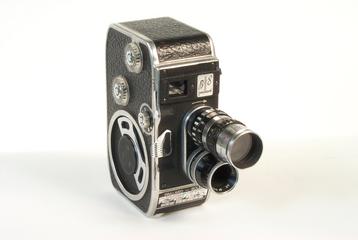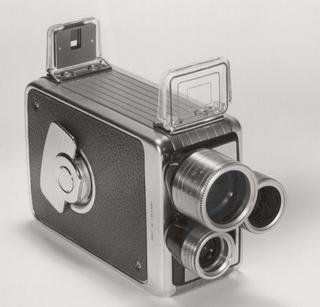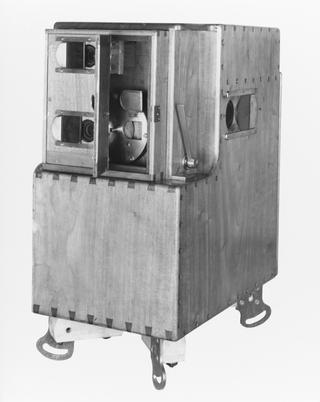
Kinemacolor cine camera made by Moy and Bastie to Charles Urban's design
- Made:
- 1909 in Camden Town
- maker:
- Ernest F. Moy Limited


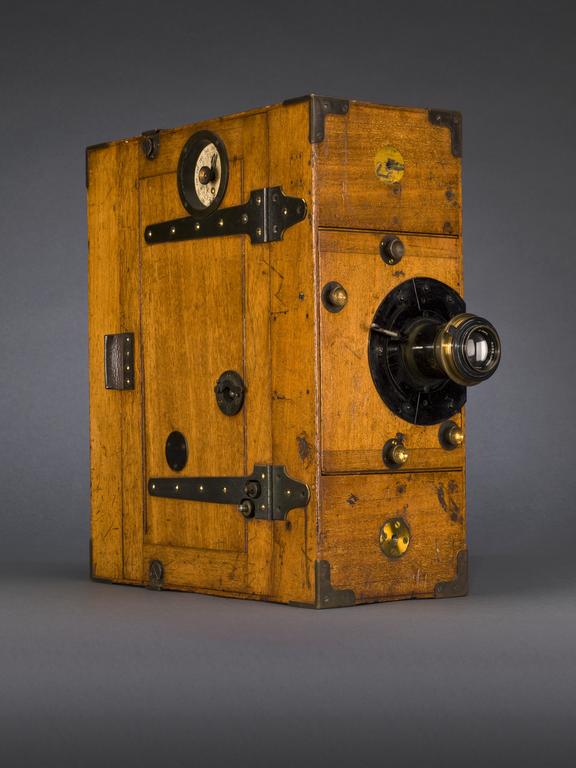
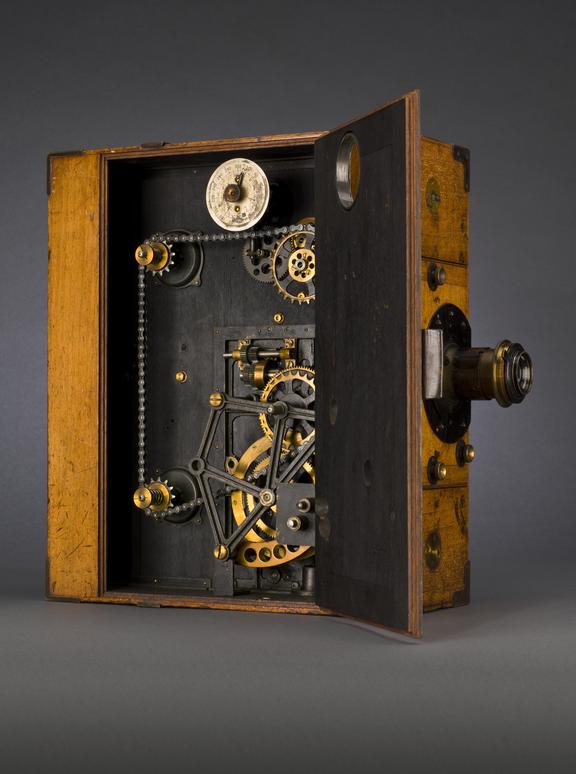
Kinemacolor camera built by Moy & Bastie in 1909 to specification of Charles Urban and G A Smith (crank handle and screws missing). Ross Xpress Patent lens 1:4.5, Serial No 85973.
Kinemacolor was the first successful colour motion picture process, used commercially from 1908 to 1914. It was invented by George Albert Smith in 1906. It was launched by Charles Urban's Urban Trading Co. of London in 1908. From 1909 on, the process was known and trademarked as Kinemacolor (The Natural Color Kinematograph Company Limited). It was a two-colour additive colour process, photographing and projecting a black-and-white film behind alternating red and green filters.
Details
- Category:
- Cinematography
- Object Number:
- 1949-66/1
- Materials:
- leather, gelatin, wood (unidentified), brass (copper, zinc alloy), glass and steel (metal)
- Measurements:
-
overall: 408 mm x 160 mm x 415 mm,
- type:
- kinemacolor cine camera
- credit:
- The National Media Museum, Bradford


